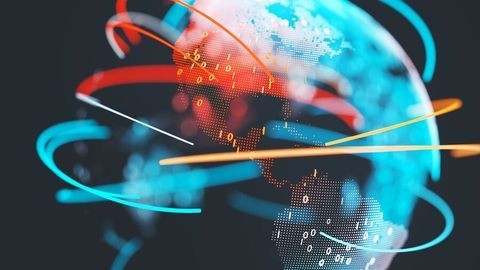Will the Real Inventor Please Stand Up? USPTO Releases New Guidance on Inventorship for AI-assisted Inventions, Focusing on Human Creation
What You Need to Know
Key takeaway #1
For clients involved in AI-related innovation, this guidance provides essential clarity on the USPTO's approach to AI-assisted inventions.
Key takeaway #2
It is important to ensure that patent applications for AI-assisted inventions appropriately recognize the contributions of natural persons. Companies should review their patent application processes to ensure they align with the USPTO's guidance.
Key takeaway #3
The guidance indicates that the USPTO will continue to engage with stakeholders and evolve its guidance as technology and legal precedent develop. This suggests that the clients should keep abreast of future updates and changes in this ever-progressing area.
Client Alert | 3 min read | 02.14.24
The United States Patent and Trademark Office (USPTO) issued a Federal Register Notice on February 13, 2024 explaining how it will analyze patent inventorship issues for inventions that utilize artificial intelligence (AI) systems. Overall, the USPTO concluded that AI-assisted inventions are not categorically unpatentable, but that a human must have made significant contributions in every aspect of the invention, and reminds applicants of their duty of candor to disclose information that could evidence that an individual may not be an inventor where her/his purported contribution was the result of an AI system.
The USPTO's guidance clarifies the agency's approach to analyzing inventorship issues as AI systems play a greater role in innovation, and identifies a non-exhaustive list of guiding principles for examiners to review when determining proper inventorship. The notice explains that the USPTO wants to focus on a patent system which aims to incentivize and reward human ingenuity while still allowing for use of AI in the inventorship process. Additionally, in connection with issuing this guidance, and in an effort to aid the public and examiners in understanding how these guiding principles should be applied to determine inventorship for claims related to AI-assisted inventions, the Patent Office has issued two examples that step through various scenarios applying each of the guiding principles.
The new procedures for determining contributions to a submitted invention affirms that AI systems cannot be named as inventors or joint inventors. Instead, patent applications for AI-assisted inventions must name the natural person or persons who significantly contributed to the invention as the inventor or joint inventors. This reasoning is based on current guiding case law factors, which require inventor and joint inventors of a patent to all have made “significant contributions” to the invention. (Pannu v. Iolab Corp., 155 F.3d 1344, 1351 (Fed. Cir. 1998)).
Recognizing that there is no bright-line test to determine if a natural person’s contribution in AI-assisted inventions is significant, the USPTO identifies the following non-exhaustive guiding principles to aid in the evaluation of the Pannu factors:
- A natural person's use of an AI system in creating an AI-assisted invention does not negate the person's contributions as an inventor.
- Merely recognizing a problem or having a general goal or research plan to pursue does not rise to the level of conception.
- Reducing an invention to practice alone is not a significant contribution that rises to the level of inventorship.
- A natural person who develops an essential building block from which the claimed invention is derived may be considered to have provided a significant contribution to the conception of the claimed invention even though the person was not present for or a participant in each activity that led to the conception of the claimed invention.
- Maintaining “intellectual domination” over an AI system does not, on its own, make a person an inventor of any inventions created through the use of the AI system.
The AI guidance tracks with the Patent Office’s current rules and guiding case law that require a human inventor to have significantly contributed to each and every claim in the patent, and that a human inventor must have contributed to the physical, definite, and/or permanent idea of an invention. This means an examiner cannot allow an invention to be patented that was conceived by AI, even if a human double-checked the claims or built the invention after the AI created the claims.
The USPTO’s inventor guidance for AI-assisted inventions applies to all applications, and to all patents resulting from applications, filed before, on, or after February 13, 2024. The inventorship analysis for applications for design patents and plant patents is the same as for utility patents. Therefore, the USPTO’s guidance regarding AI-assisted inventions applies equally to design and plant patents in the patent application process.
The USPTO has issued this notice as guidance only, and it is not currently a formal rule, which may change after receiving public comments on this guidance. Written comments on the guidance and the examples must be received on or before May 13, 2024.
Contacts
Insights
Client Alert | 3 min read | 04.26.24
CFIUS Proposes Enhanced Enforcement and Mitigation Rules and Steeper Penalties for Non-Compliance
On April 11, 2024, the Committee on Foreign Investment in the United States (“CFIUS” or the “Committee”) announced proposed amendments to its enforcement and mitigation regulations, marking the first substantive update to CFIUS’s mitigation and enforcement provisions since the enactment of the Foreign Investment Risk Review Modernization Act of 2018. The Committee issued a notice of proposed rulemaking ("NPRM”) that would modify the regulations that apply to certain investments and acquisitions, as well as real estate transactions, by foreign persons as follows:
Client Alert | 3 min read | 04.25.24
JUST RELEASED: EPA’s Bold New Strategic Civil-Criminal Enforcement Collaboration Policy
Client Alert | 6 min read | 04.25.24
Client Alert | 3 min read | 04.24.24




